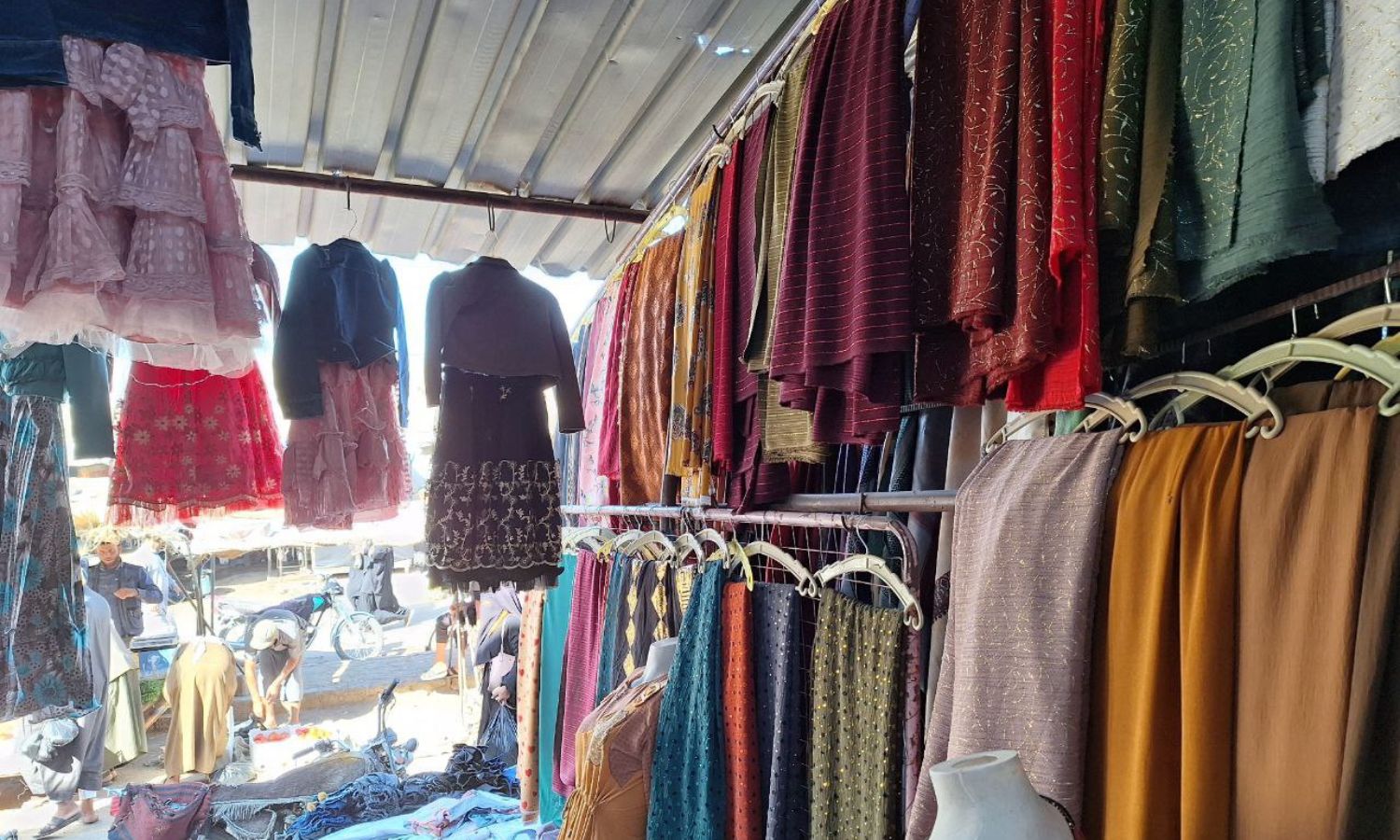



The markets in the countryside of Deir Ezzor, controlled by the Autonomous Administration of North and East Syria (AANES), are witnessing a recession in purchasing activity before Eid al-Adha, after a wheat season in which farmers suffered losses due to the official pricing set by AANES.
Enab Baladi‘s correspondent in Deir Ezzor observed slight movement in the markets, especially those selling clothes, due to high prices and low income levels.
According to several locals who spoke to Enab Baladi, the decline in purchasing activity is due to the losses sustained by farmers in the current wheat season, resulting from weak production and the low purchase price set by the Autonomous Administration.
The region, with its rural nature, mainly relies on agriculture and fuel trade, along with smuggling activities towards regime-controlled areas across the Euphrates River, as a source of income for its residents.
Some residents of the area are forced to break traditions they have always adhered to during the Eid period, due to their financial inability to continue them during this Eid.
The decrease in purchasing power among the people of Deir Ezzor has caused a clear paralysis in local markets, which have lost their usual activity during the Eid periods, unlike in previous years, or even before the last Eid al-Fitr.
Suleiman al-Saeed, a women’s fabric trader in the town of Darnaj, eastern Deir Ezzor, told Enab Baladi that the purchasing activity of the area’s residents declined following the losses endured by the local farmers.
After months of anticipation, the past wheat crop caused a financial crisis for the residents, according to the trader, noting that those now frequenting the markets are people with fixed incomes, such as Autonomous Administration employees and oil workers.
Al-Saeed added that he sells regular fabric for 75,000 for two and a half meters, which also requires 25,000 for tailoring fees to turn it into clothing, making prices high given the current conditions of the area’s people.
In turn, Hamad al-Saleh, a displaced person from the city of al-Bukamal who works at a shoe stall in eastern Deir Ezzor, said that this Eid is not like previous ones due to the continuous rise in prices.
He added that there is a decline in the volume of demand compared to previous Eids, where sales typically reached up to $1,000 around this time of year, but have not exceeded $200 this season.
According to the S-P Today website, which specializes in monitoring foreign currency movements, the Syrian pound exchange rate reached 14,800 pounds per US dollar.
“Kleija” is one of the most famous sweets that residents of the eastern provinces of Syria insist on making during the holidays, always appearing on the hospitality tables during family gatherings and visits between relatives and friends.
Housewives in Deir Ezzor countryside start preparing Kleija a week before Eid, but the cost of making it, described as “exorbitant,” has reduced the amounts usually prepared by the area’s residents.
Fatima al-Rukiwi, a housewife from eastern Deir Ezzor, told Enab Baladi that the cost of making three kilograms of Kleija now requires about 50,000 Syrian pounds, covering the cost of flour, ghee, and other needed ingredients.
Despite the high costs, al-Rukiwi insisted on making it at home to maintain the annual Eid rituals.
Livestock markets in Deir Ezzor countryside are experiencing a decline in the purchase of sacrifices, unlike usual, due to the high prices of livestock and the declining income levels, according to traders who spoke to Enab Baladi.
Omar Dawood, who typically buys a sacrifice for every Eid, found himself unable to buy one this Eid, as he told Enab Baladi.
He added that he refrained from buying due to the high prices, even though he allocated a budget of two million Syrian pounds days ago to visit the market and choose a sacrifice suitable for his previous standard, but he was shocked by prices that exceeded his expectations, ranging from four to five million Syrian pounds per sacrifice.
Hussein Hamada, a sheep trader in the Jamma market in the eastern Deir Ezzor countryside, said that high prices are due to the lack of pasture and the high cost of fodder.
He added that he bought fodder at “exorbitant” prices, with the price of a ton of bran reaching about $220, noting that livestock was affected by droughts that hit the area as well.
Deir Ezzor farmers received the Autonomous Administration’s wheat pricing decision for the 2023-2024 agricultural season as a “shock,” considering it does not cover the costs they spent on the crop during the season.
The Autonomous Administration set the price of wheat at 31 US cents per kilogram, simultaneously with a pricing offered by the Syrian regime of 36 cents per kilogram.
The pricing did not change despite farmer protests lasting several days.
if you think the article contain wrong information or you have additional details Send Correction